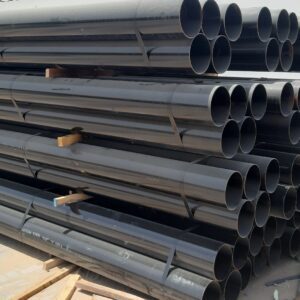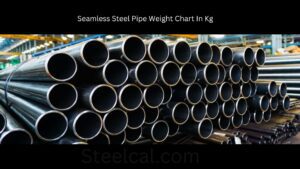Comparing Schedule 40 ERW and Seamless Pipe: A Guide to Choosing the Right Pipe for Your Project
Comparing Schedule 40 ERW and Seamless Pipe
Pipe is a crucial component in many industrial applications, and its selection can have a significant impact on the overall performance and longevity of the system. There are two main types of pipe: Electric Resistance Welded (ERW) and seamless. While both types of pipe serve the same basic purpose, there are several key differences between the two that are important to consider when making a selection. In this article, we will compare Schedule 40 ERW and seamless pipe to help you make an informed decision for your next project.
Materials and Manufacture
Schedule 40 ERW pipe is made from coils of steel that are heated and then formed into a pipe shape by welding the edges together longitudinally. This type of pipe is typically used in low-pressure applications such as drainage, water transportation, and irrigation.
Seamless pipe, on the other hand, is manufactured through a process that involves heating a solid steel billet and then piercing it to create a hollow pipe. This process results in a product that is much stronger and more consistent in its quality than ERW pipe. Seamless pipe is commonly used in high-pressure applications such as pipelines, boilers, and oil refineries.
Strength and Durability

One of the main advantages of seamless pipe over ERW pipe is its strength and durability. Seamless pipe is made from a solid piece of steel, which eliminates the possibility of defects and weak points that can be present in ERW pipe. This makes seamless pipe a much stronger and more reliable option for high-pressure applications where failure could result in significant consequences.
ERW pipe, on the other hand, can be subject to defects and weak points due to the welding process used to manufacture it. These defects can reduce the overall strength of the pipe and make it less suitable for high-pressure applications. However, ERW pipe is still a suitable option for low-pressure applications where its lower strength is not an issue.
Cost
Another major difference between Schedule 40 ERW and seamless pipe is their cost. ERW pipe is typically less expensive than seamless pipe due to the simpler manufacturing process used to make it. This makes ERW pipe an attractive option for projects with limited budgets.
Seamless pipe, on the other hand, is more expensive due to the complex manufacturing process required to make it. However, the higher cost of seamless pipe is often offset by its superior strength and durability, making it a more cost-effective option in the long run for high-pressure applications.

Pressure Rating
The pressure rating of a pipe is an important consideration, as it determines the maximum pressure that the pipe can safely withstand. Schedule 40 ERW pipe has a lower pressure rating than seamless pipe due to its lower strength. This makes it unsuitable for high-pressure applications where a higher pressure rating is required.
Seamless pipe, on the other hand, has a much higher pressure rating due to its strength and durability. This makes it the ideal choice for high-pressure applications where a high pressure rating is a key requirement.
Conclusion
In conclusion, Schedule 40 ERW and seamless pipe are both commonly used in the construction and transportation of liquid and gas. However, there are several key differences between the two that are important to consider when making a selection. ERW pipe is less expensive and suitable for low-pressure applications, while seamless pipe is more expensive but stronger and more suitable for high-pressure applications. The choice between the two will depend on the specific requirements of the application, including pressure, temperature, and fluid type. By considering these factors, you can make an informed decision that will ensure the success of your project.
“Schedule 40 ERW, Seamless Pipe, Comparison, Construction, Transportation, Liquid and Gas, Strength, Durability, Cost, Pressure Rating, Selection, Project Requirements”
Comments are closed.